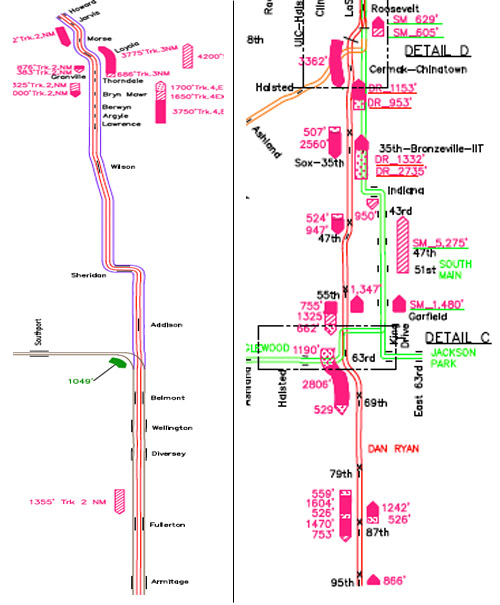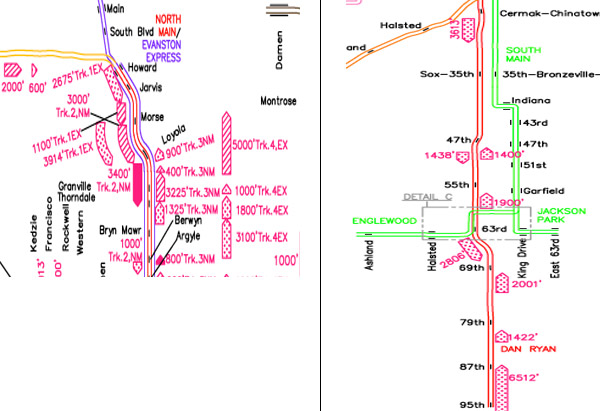Social media was buzzing yesterday with news that the Red Line will close next year from Chinatown all the way south to 95th Street—the entire Dan Ryan stretch of the El—for five months. It's a heavily used part of the CTA—of non-Loop stations, only Fullerton had more average weekday riders in the last month data is available, April, than 95th (15,251 to 12,235). It was argued by a number of people that the city would never close down the north-side stretch of the Red Line. Perhaps that's true—but there's not much reason to. The south-side branch of the Red Line, however, is in terrible condition: the worst stretch of track on the entire El, according to the CTA's most recent Slow Zone maps.
30 percent of the Dan Ryan line is a slow zone—30,233 linear feet out of 101,332 feet. The North Main Line is a slow zone for a bit more than half that, 17 percent (13,072 feet out of 78,966 feet). But 19 percent of the Dan Ryan line is 15 mph slow-zone track, compared to 11 percent of the North Main Line. In effect, the condition of the south-side Red Line is twice as worse as the north-side Red Line, while being almost 20 percent longer. Of all types of slow zone on all the El lines, the 19,444 linear track-feet of 15-mph slow zone on the Dan Ryan line is the most extensive.
Here's a comparison (not to scale); solid arrows are 15 mph slow zones, diagonal lines are 25 mph slow zones, and dots are 35 mph slow zones:

One thing that would smooth possible shutdown tensions: if the mayor follows through on his promise to extend the Red Line another 35 blocks. That would be the opposite of what happened when the city closed the Green Line for two and a half years in 1996 for rehab (h/t @ourmaninchicago), tearing down the East Woodlawn branch of the Green Line in the process. (When I lived in the neighborhood and commuted over an hour each way to work, taking the 63 out to the Dan Ryan, I rued its disappearance.)
The first nine north-side stops, Howard to Argyle, are actually on worse track than the first nine south-side stops, though they represent fewer blocks. And both have deteriorated in the past five years. Here's what they looked like in June 2007:

The north end of the Red Line would actually make a sensible target for a similar rebuild, and would disrupt fewer passengers on a per-station basis. But extensive work on the far north-side Red Line, as CTA Tattler reported in April, will be a longer time coming.


